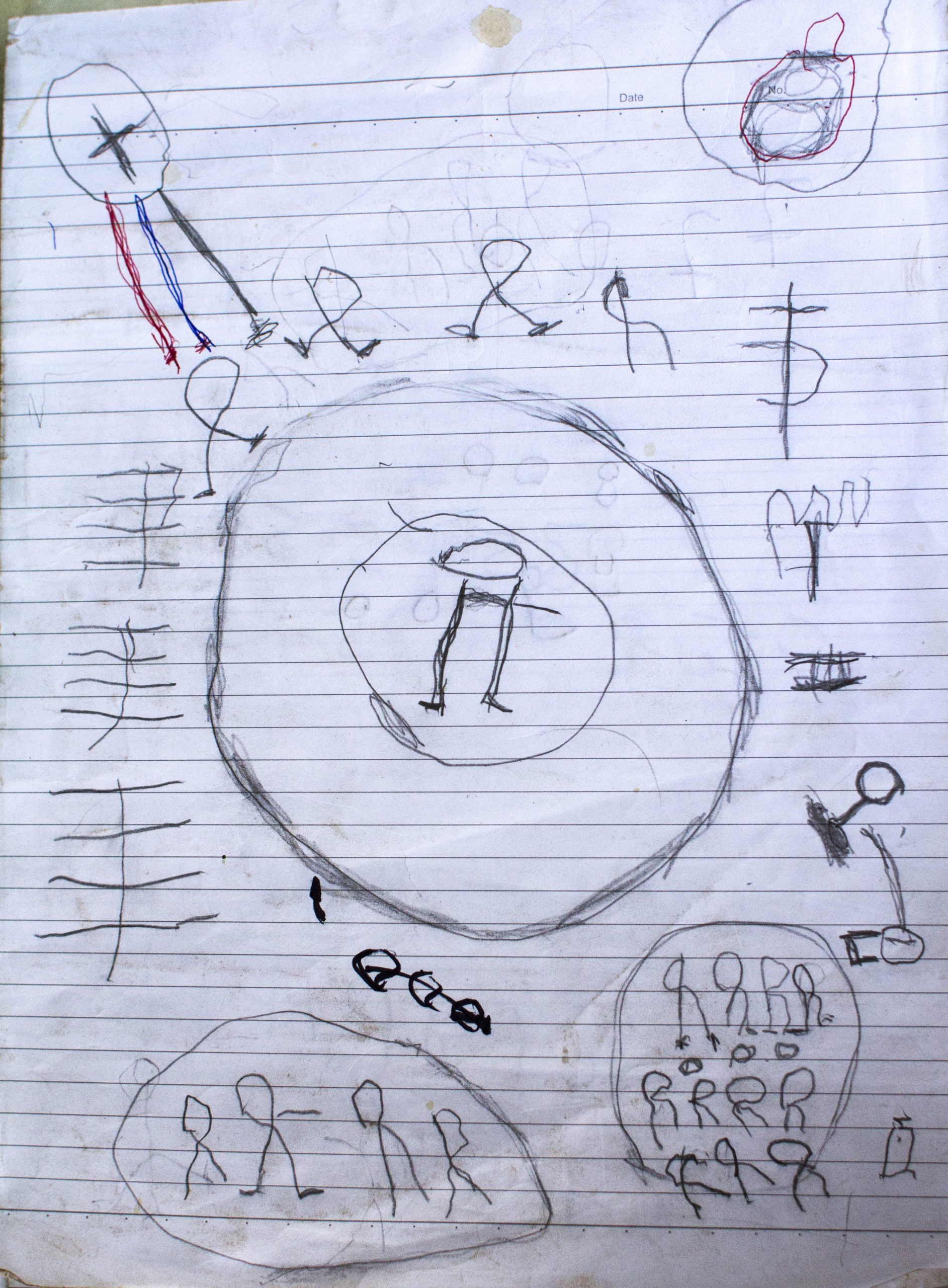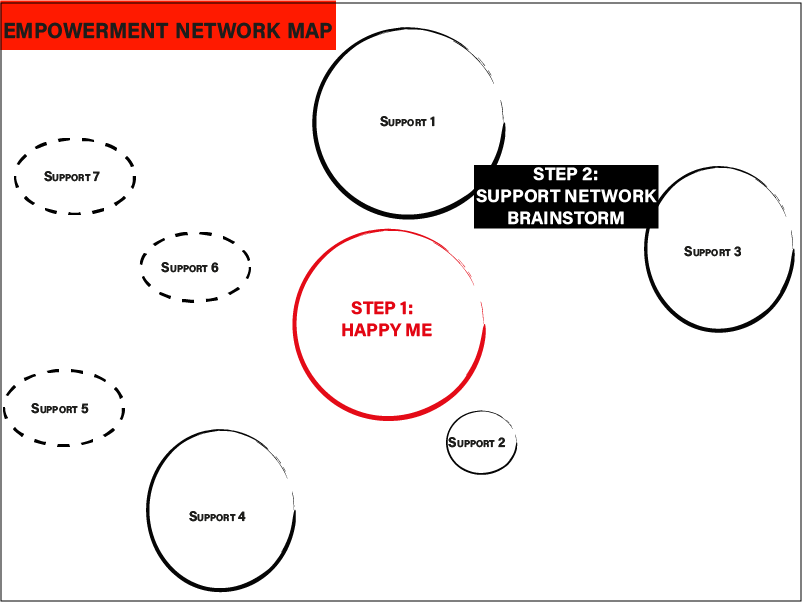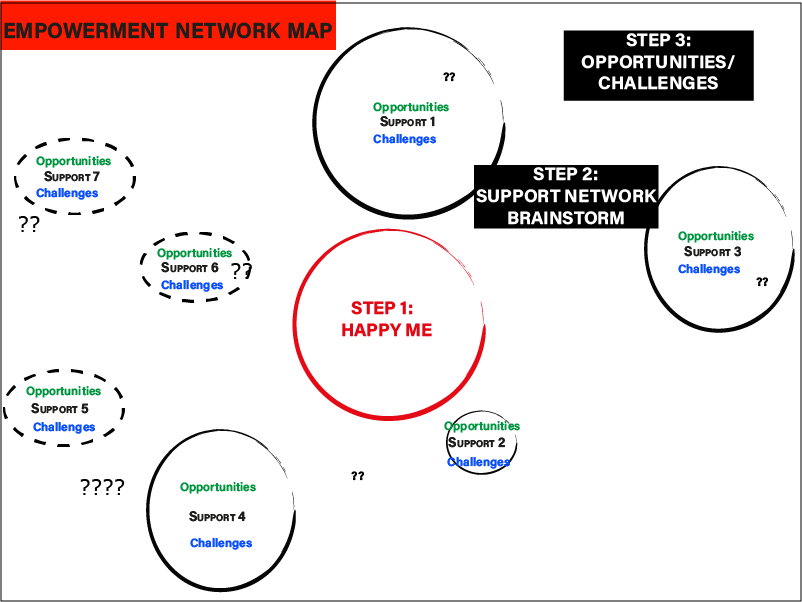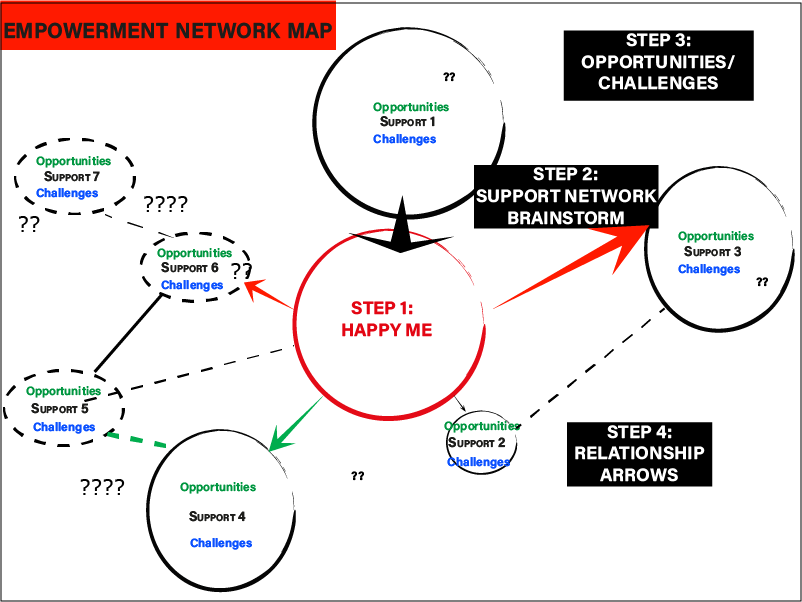About the Toolkit
Held over a weekend, the event is structured around a series of exhibitions, workshops, and panel discussions. The exhibitions showcase a curated selection of photographs that tell compelling stories from various corners of the globe, each image accompanied by detailed narratives that provide context and deeper insight into the historical significance of the scenes depicted. These photographs are drawn from the archives of renowned photographers, as well as emerging talents, ensuring a blend of both classical and contemporary perspectives.
empowerment map: Tool Steps
STEP 1 EMPOWERMENT VISION:
How will I look if I am free from violence, empowered and happy?
Think first how you are now. Are you happy or sad? are you a survivor/victim of violence from some people? are you a perpetrator of violence towards other people?
How will you be as ‘the ideal you’ – the future you who is free from violence and does not commit violence against others?
Draw that ideal person in the centre of the diagram – that ideal is at the centre of the empowerment web you will build.
Step 2 PEOPLE AND INSTITUTIONS THAT CAN SUPPORT ME
to free myself from violence
violence against me or violence that I myself commit. Work outwards from the centre, putting the people and institutions who are most important closest to you. Make sure you draw people in different colours, shapes, sizes, characteristic objects etc so you can recognise them later. Include any groups you are a member of eg savings groups, religious groups, ‘important people’ are not necessarily only your immediate household or even the wider family. It could include eg banks, or even the president. You can also use different types of line to indicate how important or powerful these people are. Inside each circle put symbols for the different opportunities or challenges that each presents in your fight against violence.
Step 3
Step 4 RELATIONSHIP ARROWS:
STEP 4: For these people/institutions:
Ring in red any who are already part of your support network
Ring in green any who are likely to be sympathetic but who you need bring into your support network. Put a very thick ring around those who may be most powerful in support.
Ring in blue any who are likely to oppose your vision. Put a very thick ring around those who are most powerful in opposition. These are people you can either leave, or persuade through working with others.
Put arrows between people and institutions who are linked – differentiate the type and strength of the linkage through colour and thick/thin line and direction.
Put a very thick green circle around the main entry points as key targets for a change strategy.
Step 5 STEP 5: ACTION PRIORITIES:
Then put very thick green circles around about 5 targets and think concretely about:
what will you do? eg will you share any of the tools? lobby or provide other information? put people in contact with others?
what will be the timeframe? at least one activity for each target within one month, however small, and other strategies over a longer time if necessary.
Step 5 STEP 5: ACTION PRIORITIES:
Then put very thick green circles around about 5 targets and think concretely about:
what will you do? eg will you share any of the tools? lobby or provide other information? put people in contact with others?
what will be the timeframe? at least one activity for each target within one month, however small, and other strategies over a longer time if necessary.








